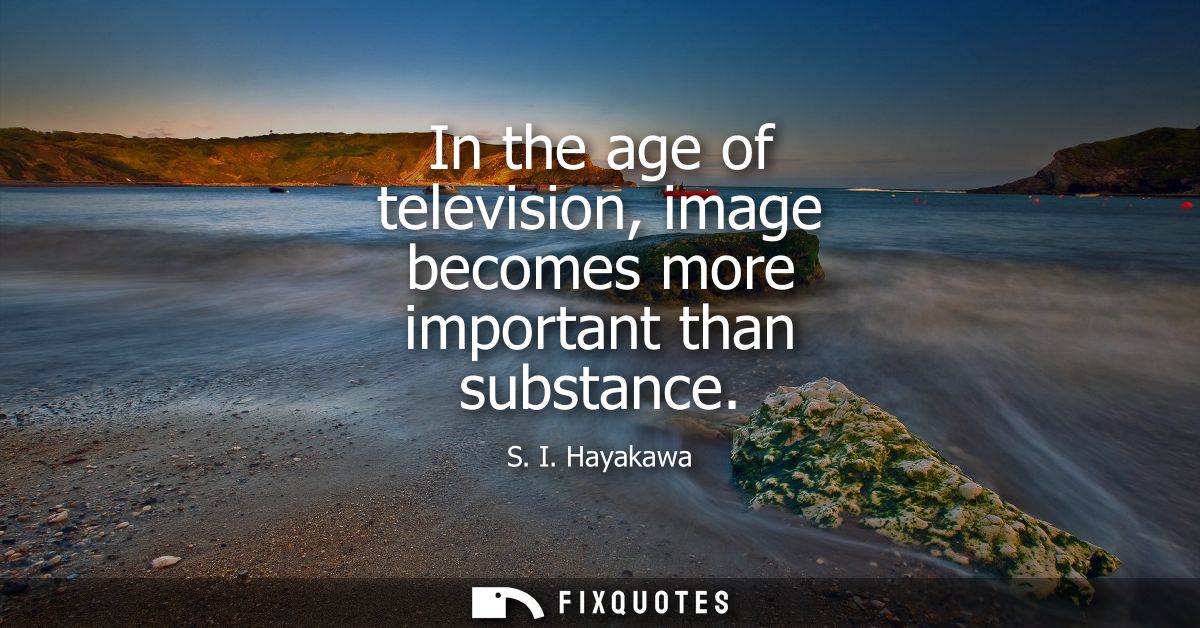"In the age of television, image becomes more important than substance"
About this Quote
S. I. Hayakawa’s statement reflects profound insight into the societal impact of modern mass media, particularly television. As television became a central feature of daily life, communication underwent a dramatic shift. What is seen often matters more than what is said or meant; visual appeal, charisma, and presentation can eclipse the underlying facts, depth, or validity of a message. This transformation is evident not only in the realm of entertainment but also in politics, education, and even social interactions.
Television prioritizes spectacle and appearance. Those adept at creating compelling images, projecting confidence, and appearing trustworthy frequently achieve greater influence, regardless of the quality or substance of their ideas. The public, bombarded by rapid-fire visuals and surface-level narratives, develops a preference for what is immediately attractive or emotionally appealing. Nuanced discussions and detailed analysis are compressed into a few soundbites or vivid images, making it difficult for substance to compete with style.
Politicians, for example, often focus enormous effort on managing their public image , their body language, attire, slogans, and even the backdrops of their appearances , because they understand viewers are strongly influenced by visual cues. Debates may be won or lost not by the strength of an argument but by a single memorable gesture or facial expression. In a similar vein, advertisements and news coverage frequently rely on striking visuals, sometimes at the expense of accuracy or complexity.
As image supersedes substance, critical thinking and informed decision-making become more challenging. Audiences can be swayed by appearances without scrutinizing the realities beneath the surface. This phenomenon encourages a superficial engagement with information, prioritizing aesthetic or emotional resonance over truth or logic. Consequently, public discourse risks becoming shallow, with important issues reduced to their most visually stimulating elements, obscuring the complexity and depth necessary for genuine understanding.
More details
About the Author

